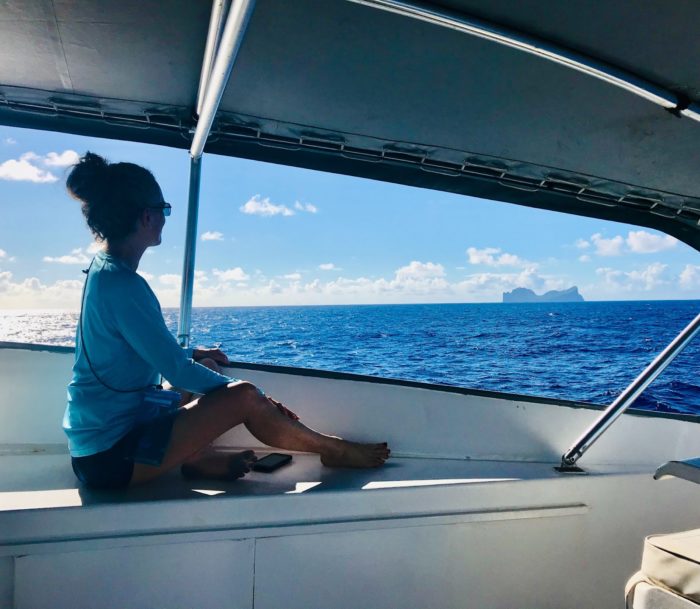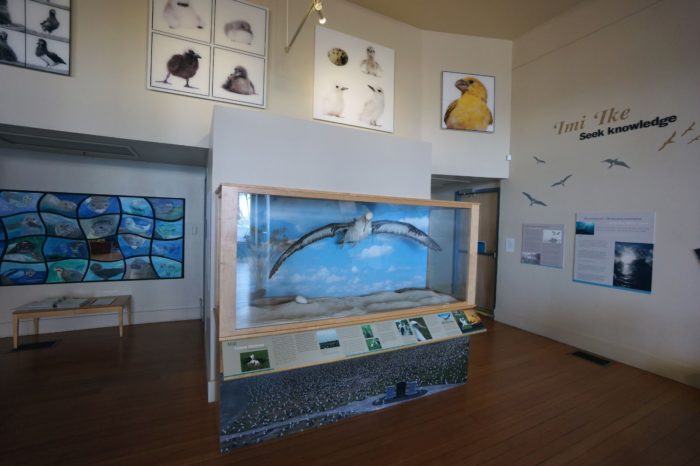
Mahina ‘Ōlelo Hawaiʻi: A Language Rescued from the Brink of Near Extinction

Malia K. Evans is the Oʻahu Outreach and Education Coordinator at the National Marine Sanctuary Foundation on behalf of the Papahānaumokuākea Marine National Monument. Photo credit: Paige Wernli
By Malia K. Evans, Oʻahu Outreach and Education Coordinator at the National Marine Sanctuary Foundation on behalf of the Papahānaumokuākea Marine National Monument.
It is estimated that one Indigenous language dies every two weeks.
Language is vital to a peopleʻs identity, culture, values, history and knowledge systems. What happens when that language is on the precipice of extinction as a result of colonization? Forty years ago, Hawaiʻi was facing a future without ʻŌlelo Hawaiʻi, the Hawaiian language, as less than 50 children under the age of 18 could speak it. In 1982, a small, tenacious group of Hawaiian language educators organized to revive ʻŌlelo Hawaiʻi by creating the first of many ʻAha Pūnana Leo preschools to perpetuate Hawaiian language and culture through a new generation of fluent speakers.
It takes one generation to lose a language and three generations to recover it.
ʻŌlelo Hawaiʻi, the Hawaiian language was the official spoken and written language of the Hawaiian Kingdom government, commerce, society and education systems until 1896. King Kamehameha the Great, unifier of the Hawaiian Islands, passed in 1819 and his son Liholiho succeeded him as Kamehameha II. During his brief reign, Liholiho developed a progressive literacy program during the early 1820ʻs that transformed an oral culture to one that boasted a 90% literacy rate by 1834, during the reign of Kamehameha III. Between 1834-1948, over 100 Hawaiian language newspapers flourished through the scholarship of Native Hawaiian editors and authors encompassing cultural knowledge and heritage, traditional practices, political activism, global news, and many more aspects of life in the Kingdom of Hawaiʻi. Roughly 1.5 million pages were published, making the Hawaiian language newspaper collections one of the largest repositories of Indigenous language materials in the world.
In 1893, the lawful Hawaiian Kingdom government ruled by Queen Liliʻuokalani was illegally overthrown with the aid of US troops under the direction of a US government minister and American influenced businessmen. Three years later, the Republic of Hawaiʻi under Act 57, Sec. 30 of the 1896 Laws of the Republic of Hawaiʻi mandated that English become the only medium of instruction and prohibited the use of Hawaiian language in schools. Schools not following the policy were ineligible for government funding. The disruption of Hawaiian language transmission occurred in one generation, where our kūpuna, our elders were physically and emotionally punished for speaking their mother language.

A portion of the 2,100 line Hawaiian creation chant “Kumulipo” is artistically rendered in a mural painted by Kahi Ching and displayed in the Mokupāpapa Discovery Center. Photo credit: Papahānaumokuākea Marine National Monument
Three generations later, the revitalization and normalization of ʻŌlelo Hawaiʻi, Hawaiian language continues.
In 1978, ʻŌlelo Hawaiʻi was recognized as one of two official languages of the state of Hawaiʻi, yet it wasnʻt until 1986 that the 90 year ban on teaching ‘Ōlelo Hawaiʻi in public schools was dismantled by Hawaiian language advocates. In 2013, the state of Hawaiʻi designated February as Mahina ‘Ōlelo Hawaiʻi, Hawaiian Language Month to celebrate and elevate the Hawaiian language as a living language rescued from the brink of near extinction. In 2023, we celebrate over 3,000 PreK-12 students enrolled in 28 kula kaiapuni, public Hawaiian language immersion schools that are globally recognized as successful examples of Indigenous language and cultural revitalization programs. We celebrate the 26,000 self-identified Hawaiian language speakers and the 6,000 students within the University of Hawaiʻi system working toward a BA, MA or PhD taught entirely in the Hawaiian language.
The National Marine Sanctuary Foundation supports Hawaiian language content development through Papahānaumokuākea Marine National Monument (PMNM) and the Mokupāpapa Discovery Center that features exhibit and interpretive panels in ‘Ōlelo Hawaiʻi and English. The center is one of the few public exhibition spaces where the Hawaiian language and culture are woven into education and outreach programs. Scroll through Papahānaumokuākea’s Hawaiian language educational resources and a couple of NOAA/ONMS produced webinars here and here. In addition, Papahānaumokuākea’s Native Hawaiian Cultural Working Group members guide and engage in collaborative partnerships that incorporate Hawaiian language and knowledge systems into research, policy, educational and outreach material. At Papahānaumokuākea Marine National Monument, the Hawaiian language is a foundational element for the stewardship work we do.
E ola ka ʻŌlelo Hawaiʻi! The Hawaiian language shall live!

Example of exhibits at Mokupāpapa Discovery Center that incorporate the Hawaiian language. Photo credit: Andy Collins/NOAA
